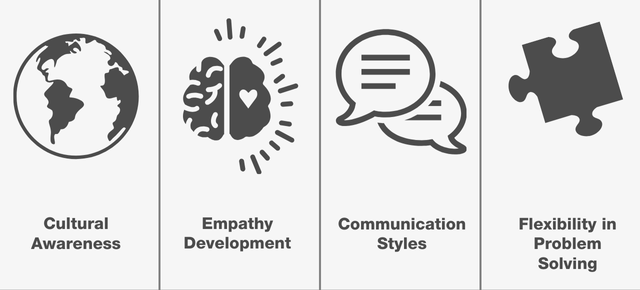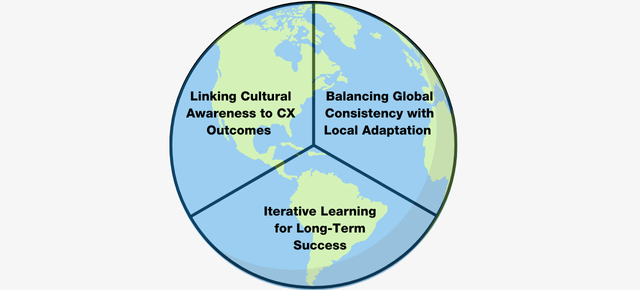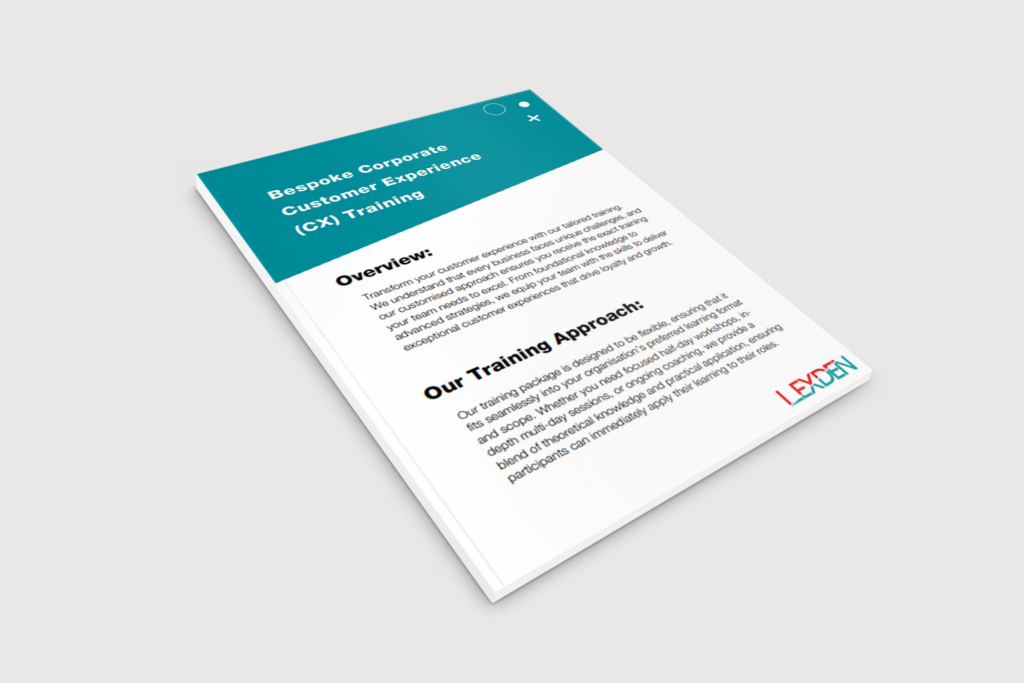Navigating a complex web of cultural nuances is a key challenge for Customer Experience (CX) teams in the global marketplace. Customers from different regions have distinct expectations, communication styles, and values that can profoundly impact how they perceive a brand. For cross-cultural CX teams, addressing these differences through tailored training is critical to success.
Why Cultural Differences Matter in CX
Cultural differences inform customer behaviours. For instance, queuing is not a global practice. Understanding culture norms in customer experience design will impact customer satisfaction. A lack of cultural understanding can result in missteps that damage brand trust, while culturally attuned interactions foster lasting connections.
For example, imagine a global e-commerce brand expanding into a market where customer service expectations differ vastly. In Brazil, customers value personal interaction and may expect proactive follow-up, whereas in Germany, efficiency and straightforward communication might be more appreciated. Without understanding these nuances, the brand risks alienating customers by offering a “one-size-fits-all” experience.
Building cultural consideration into customer experience management practices
At Lexden, we’ve delivered customer experience change programmes in more than 25 countries. While our framework remains consistent, we adapt its application to accommodate each country’s unique cultural nuances. Without this flexibility, success would often be compromised. Cultural understanding shapes where, how, and when we engage with customers.
For example, in some countries, recording interviews is viewed as a mark of respect, demonstrating the company’s commitment to capturing feedback accurately. In others, recording is seen as intrusive or as an attempt to hold customers accountable for their comments, making it unacceptable.
The dynamic between interviewers and interviewees also varies. In certain regions, having more interviewers than interviewees feels intrusive, while in others, it conveys respect for the interviewee’s importance.
The choice of interview location further highlights cultural differences. For some customer groups, conducting interviews in their environment – while they go about their day – was crucial. In one country, meeting in busy, visible cafés added credibility. In another, reserving a private, formal space signalled seriousness and professionalism.
We’ve tailored the same customer insight research process in more than 20 distinct ways, ensuring it delivers valuable insights for clients and respects the cultural expectations of their customers. This approach is central to driving meaningful, globally resonant customer experience programmes.
Practical Example: Starbucks’ Journey to Cultural Transformation
This may be a case everyone is familiar with, so apologies for resharing, but it makes the point well. Starbucks provides a clear example of how addressing cultural issues can transform CX .

In 2018, Starbucks closed over 8,000 U.S. stores for a day to conduct racial bias training for 175,000 employees. This unprecedented move followed an incident of racial profiling that sparked nationwide controversy. Starbucks recognised the event as not just a crisis but a catalyst for deeper cultural change.
The training included modules on bias awareness, empathy, and mindful decision-making, developed with experts in diversity and inclusion. It was not a one-time event—Starbucks rolled out additional training modules over the following year, covering topics like cultural perspectives, leadership, and building diverse teams.
By addressing bias directly and embedding continuous learning, Starbucks reaffirmed its commitment to the “third place” ethos—a welcoming environment between home and work. This initiative demonstrated how customer experience is directly linked to an organisation’s cultural awareness and its ability to address systemic issues proactively.
Starbucks’ example underscores the importance of iterative learning to build cultural competence over time.
Key Areas to Address in Training

- Cultural Awareness:
Always understand how cultural backgrounds influence customer behaviour. Include training on high-context versus low-context cultures. This should include differing attitudes toward time, how to manage the interview and clarity on what happens to the insight.
- Empathy Development:
Encourage active listening and open-mindedness to overcome biases. Role-playing scenarios can help team members practice responding to culturally specific customer needs. We often train client’s colleagues to conduct the interviews, so we go into detail on what bias is, how to spot it in yourself and how to overcome it.
- Cultural Communication Styles:
Develop an appreciation of verbal and non-verbal communication differences, such as tone, gestures, or eye contact, that may vary across cultures. This can be critical in a meeting. The way in which aspects such as pausing, or periods of silence in a discussion matter. Plus, recognising when hierarchies exist in many business cultures is especially important.
- Flexibility in Problem Solving:
Cultural expectations influence how customers view problem resolution. Tailor approaches to suit preferences, such as focusing on group consensus or individual accountability. We would always encourage customers to be involved in the development of solutions. But you need to recognise in some cultures inviting the customer in to solve the company’s problem can be seen as a weakness and not a strengthening of the relationship.
Broader Lessons for CX Teams

Linking Cultural Awareness to CX Outcomes
Cultural training is not only about diversity; it is about improving customer experience. A better understanding of customer preferences can reduce friction in interactions, increase overall satisfaction, and provide customers the confidence that the company they are dealing with understands them.
Iterative Learning for Long-Term Success
Starbucks’ commitment to continuous improvement highlights the value of embedding cultural training as an ongoing initiative. As your customer centricity matures, then how you deliver it will evolve. New skills will be needed, so it is important to review and refresh your CX learning and development programmes alongside your customer-centricity plans.
Balancing Global Consistency with Local Adaptation
Training should address the tension between delivering a consistent global brand experience and adapting to local cultural preferences. Starbucks’ strategy of reinforcing its “third place” values while addressing systemic issues offers inspiration for how CX teams can balance these priorities effectively.
Practical Tips for Implementing Cultural Training
Collaborate with Local Experts: Partner with cultural consultants or regional teams to ensure training content is accurate and meaningful. Your customers will be the best source of learning here. As well as fostering knowledge-sharing among team members who have experience in different markets.
Leverage Real-World Scenarios: Use case studies and role-playing to illustrate cultural differences in action, helping teams practice adaptive strategies. There are great tools such as Ramplit which allow participants to respond to simulated discussions with customers. The direction of the conversation is dynamic with different responses based on what the participant says and how they say it.
Make Training Continuous: Cultural dynamics evolve. Regularly update training materials and provide ongoing learning opportunities. Cultural training should sit in the ‘quality assurance’ suite, always being revisited.
Encourage Peer Learning: By investing in cultural training, CX teams can foster a deeper understanding of their customers, reduce service friction, and create a sense of inclusion that resonates across markets.
Empower your team
Empowering your team to navigate cultural differences is key to delivering exceptional customer experiences in a global market. Ready to enhance your CX training programmes or explore bespoke solutions tailored to your organisation’s needs?

You may be interested in our Bespoke Corporate Training Services.
Email Michael Brandt at [email protected] to learn more and start the conversation.


